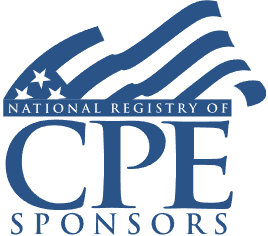SECURE Act 2.0 Considerations for Estate Planners and Administrators
Challenges and Opportunities for Retirement Benefits, Trusts, and Distributions

Course Details
- smart_display Format
On-Demand
- signal_cellular_alt Difficulty Level
Intermediate
- work Practice Area
Estate Planning
- event Date
Friday, December 13, 2024
- schedule Time
1:00 p.m. ET./10:00 a.m. PT
- timer Program Length
90 minutes
-
This 90-minute webinar is eligible in most states for 1.5 CLE credits.
-
BARBRI is a NASBA CPE sponsor and this 110-minute webinar is accredited for 2.0 CPE credits.
-
BARBRI is an IRS-approved continuing education provider offering certified courses for Enrolled Agents (EA) and Tax Return Preparers (RTRP).
This CLE/CPE webinar will provide guidance to estate planners and advisers on the impact of the SECURE Act 2.0 on estate planning and administration. The panelist will discuss regulatory and tax rules stemming from the SECURE Act 2.0 and opportunities for retirement benefits, trusts, and distributions. The panelist will also provide effective estate and tax planning techniques in light of the current rules.
Faculty

Mr. LaMendola specializes in charitable planning and planning for retirement plan benefits. He is the editor of the firm’s E-Update, a monthly publication that summarizes several recent developments of interest to estate planners. He is also the assistant editor of the firm’s Newsletter, a quarterly publication that contains several articles on estate planning, business succession planning and charitable planning topics. He has been a member of the firm since 1996 and of the State Bar of Michigan since 1994.
Description
The SECURE Act 2.0 significantly expands the effect and provides additions to the 2019 SECURE Act. Estate planners, advisers, and attorneys must recognize the impact of the SECURE Act 2.0, the opportunities it provides for estate and tax planning, its requirements, and potential challenges.
Under the SECURE Act 2.0, certain workers, retired taxpayers, and small businesses stand to benefit from this recent legislation. The 2019 legislation increased the age for required minimum distributions from 70 ½ to 72, but now the RMD age has been increased to 73 for taxpayers not 72 years old on the last day of 2022.
Other welcomed additions that must be considered by estate planners include (1) a credit for 100 percent of the costs of establishing a retirement plan for eligible businesses with 50 employees or less; (2) eligibility to participate in 401(k) plans and payments on student loans for long-term part-time employees with employer matching contributions; (3) 529 plan rollovers to Roth IRAs; (4) changes to the RMD and reduction in the RMD excise tax; and other key items.
Many changes under SECURE Act 2.0 have specific effective dates along with IRS and DOL guidance in order to minimize substantial complications that may arise if such guidance isn't provided. Estate planners, advisers, and attorneys must understand the sweeping changes made by this legislation, who it affects, and how to handle the areas that are unclear as to estate and tax planning.
Listen as Salvatore J. LaMendola, Member at Giarmarco Mullins & Horton, discusses the key provisions of the SECURE Act 2.0 and how it impacts the planning and administration of estates and trusts and offers best practices for attorneys and advisers.
Outline
- SECURE Act 2.0; key provisions and remaining issues
- Provisions effective in 2024 and 2025
- Changes made to the 2019 SECURE Act (1.0)
- Key estate planning considerations and challenges
- Challenges for trusts
- Key modifications to consider for estates and trusts
- Other key items and best practices for estates and trust administration
Benefits
The panelist will review these and other essential items:
- What should estate planners know about the SECURE Act 2.0?
- What are the unresolved issues of the SECURE Act 2.0 for estates and trusts?
- What are estate and trust planning techniques available in light of the SECURE Act 2.0?
- What is the impact of the retirement plan set-up credits?
- What are the exceptions to the 10 percent penalty for early withdrawal?
- What are the key provisions and potential challenges for estate planners?
NASBA Details
Learning Objectives
After completing this course, you will be able to:
- Identify exceptions to the 10 percent early withdrawal penalty
- Recognize key effective dates for SECURE 2.0 provisions
- Determine current changes to RMDs
- Decide who qualifies as a long-term part-time employee
- Ascertain how SECURE 2.0 altered SECURE 1.0
- Field of Study: Taxes
- Level of Knowledge: Intermediate
- Advance Preparation: None
- Teaching Method: Seminar/Lecture
- Delivery Method: Group-Internet (via computer)
- Attendance Monitoring Method: Attendance is monitored electronically via a participant's PIN and through a series of attendance verification prompts displayed throughout the program
- Prerequisite: Three years+ business or public firm experience preparing complex tax forms and schedules, supervising other preparers or accountants. Specific knowledge and understanding of individual income taxation, including itemized deductions, individual income tax credits, net operating loss limitations including carrybacks and carryforwards.

Strafford Publications, Inc. is registered with the National Association of State Boards of Accountancy (NASBA) as a sponsor of continuing professional education on the National Registry of CPE Sponsors. State boards of Accountancy have final authority on the acceptance of individual courses for CPE Credits. Complaints regarding registered sponsons may be submitted to NASBA through its website: www.nasbaregistry.org.

Strafford is an IRS-approved continuing education provider offering certified courses for Enrolled Agents (EA) and Tax Return Preparers (RTRP).
Related Courses

Avoiding Trust and Estate Probate Challenges: Minimizing and Litigating Claims of Undue Influence, Fraud, Capacity, and Mistakes
Thursday, April 17, 2025
1:00 p.m. ET./10:00 a.m. PT

Estate Administration and Probate 101: The Basics
Available On-Demand
Recommended Resources
Building Your Book: Strategies to Secure Long-Term Success
- Business & Professional Skills
- Career Advancement
- Talent Development